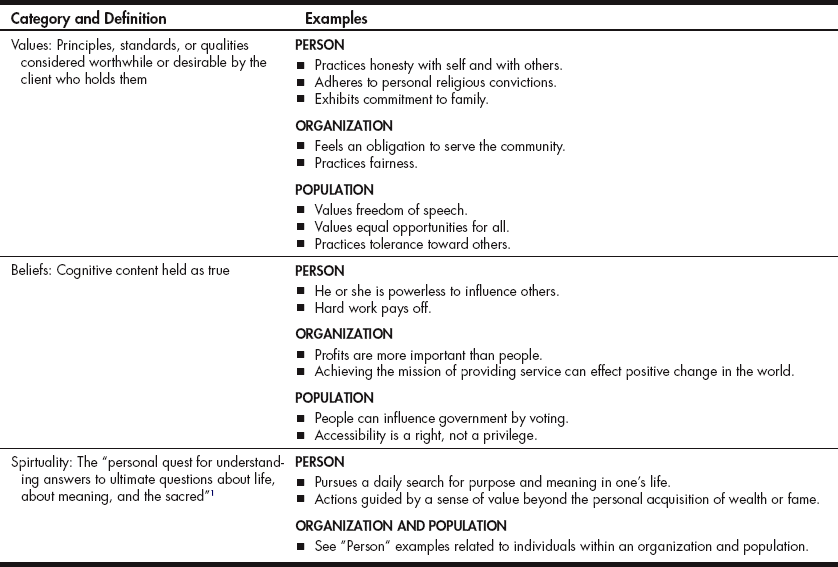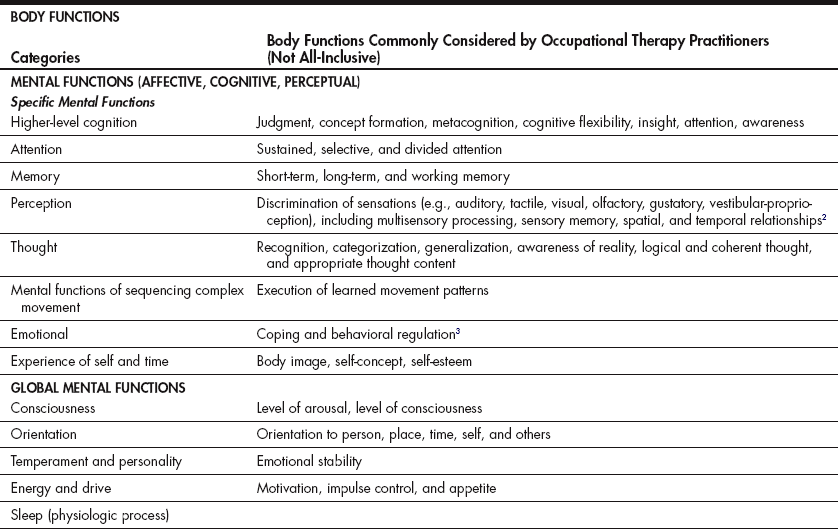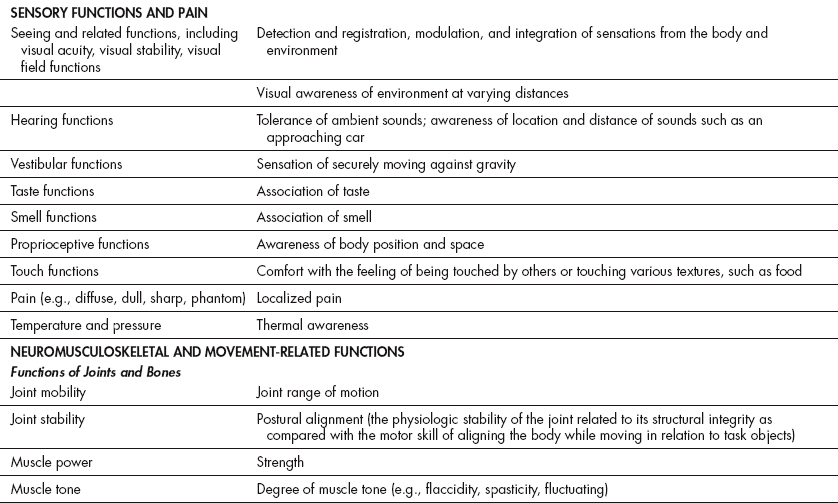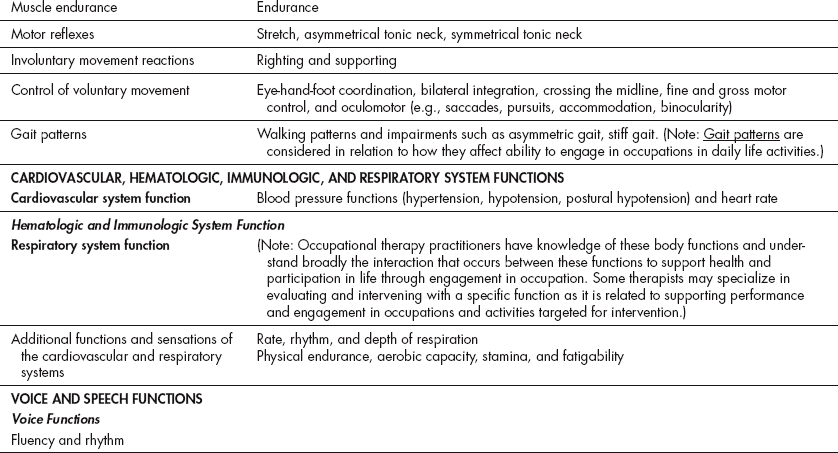Chapter 1 1 Understand how the occupational therapy practice framework (OTPF) may structure activity analysis for intervention. 2 Define terms from the OTPF as they are used in activity analysis. 3 Describe the stages of groups. 4 Identify the types of groups. 5 Differentiate between occupation, task, and activity. 6 Discuss the basic concepts of group process and acuity analysis. The OTPF provides guidance for developing therapeutic group activities. First, the practitioner examines the area of occupation important to address within the group (Box 1-1). In the previous example, the OT student decides to design a group activity to increase the veterans’ independence in community mobility (Figure 1-1). The occupational area of community mobility includes moving around in the community and using transportation, such as driving, walking, bicycling, or accessing public transportation (i.e., buses, subway). Other areas of concern that could be the focus of the intervention include the areas of self-care, leisure, or social participation. The student (Lila) may decide group activities should target areas of home management or financial management. It may be that the members’ goals focus on different areas of occupation during group sessions. Examining the group members’ values, beliefs, and spirituality is useful for motivating clients, addressing key areas of concern, and helping members understand themselves. Periodically, group sessions focus on values clarification exercises or exercises to identify one’s belief systems (Table 1-1). In this example, the veterans acknowledged that increased independence in community mobility will enhance their feelings of self-worth and believe that this group activity will be of value to them. TABLE 1-1 Values, Belief, and Spirituality From the American Occupational Therapy Association: Occupational therapy practice framework: domain and process, Am J Occup Ther, 62:634, 2008. Importantly, the practitioner identifies the client factors and body functions considered when developing the community mobility group activity. Such factors as impaired attention, memory, or perception may interfere with a person’s ability to engage in the activity. Additional client factors are neuromusculoskeletal, sensory and pain, and mental (specific and global) functions. The practitioner may work on multiple client factors within a group session. Understanding the individual’s strengths and weaknesses in terms of client factors allows the practitioner to design appropriate activities. The goal of the group activities is for all participants to benefit. Therefore, the practitioner examines how client factors enable or hinder a person’s performance (Table 1-2). For example, the practitioner may modify activities for clients who are unable to read or follow multiple-step directions. TABLE 1-2 Client Factors: Body Functions and Structures From the American Occupational Therapy Association: Occupational therapy practice framework: domain and process, Am J Occup Ther 62:635-637, 2008. The practitioner determines the individual’s goals as well as the group’s goals (see Chapters 6 and 7). After determining the goals, the practitioner creates activities to address these needs. Activity analysis involves examining the aspects of activities required to carefully plan how to work with clients and help them meet their goals. Spending time doing this provides the practitioner with the information needed to adjust activities quickly during intervention sessions. Therefore, practicing analyzing activity in multiple situations benefits students and practitioners. This text provides numerous examples of activity analyses. Box 1-2 provides a sample analysis for a community mobility group. The OTPF provides examples and definitions of activity demands that may be used for analyzing activities (Table 1-3). Understanding the activity demands in relationship to the group goals allows practitioners to problem solve prior to leading the group. Preparation and reflection help the practitioner plan and determine if and how tasks may be modified for specific individuals to meet multiple goals. For example, the practitioner may need to provide bus schedules in large print. TABLE 1-3 From the American Occupational Therapy Association: Occupational therapy practice framework: domain and process, Am J Occup Ther 62:635-637, 2008.
Occupational Analysis and Group Process
Occupational Therapy Practice Framework





Activity Demand Aspects
Definition
Examples
Objects and their properties
Tools, materials, and equipment used in the process of carrying out the activity
Tools (e.g., scissors, dishes, shoes, volleyball)
Materials (e.g., paints, milk, lipstick)
Equipment (e.g., workbench, stove, basketball hoop)
Inherent properties (e.g., heavy, rough, sharp, colorful, loud, bitter tasting)
Space demands (relates to physical context)
Physical environmental requirements of the activity (e.g., size, arrangement, surface, lighting, temperature, noise, humidity, ventilation)
Large, open space outdoors required for a baseball game
Bathroom door and stall width to accommodate wheelchair
Noise, lighting, and temperature controls for a library
Social demands (relates to social environment and cultural contexts)
Social environment and cultural contexts that may be required by the activity
Rules of game
Expectations of other participants in activity (e.g., sharing supplies, using language appropriate for the meeting)
Sequence and timing
Process used to carry out the activity (e.g., specific steps, sequence, timing requirements)
Steps to make tea: Gather cup and tea bag, heat water, pour water into cup, and so forth.
Sequence: Heat water before placing tea bag in water.
Timing: Leave tea bag in cup to steep for 2 minutes.
Steps to conduct a meeting: Establish goals of meeting, arrange time and location for meeting, prepare meeting agenda, call meeting to order.
Sequence: Have people introduce themselves before beginning discussion of topic.
Timing: Allot sufficient time for discussion of topic and determination of action items.
Required actions and performance skills
The usual skills that would be required by any performer to carry out the activity
Sensory, perceptual, motor, praxis, emotional, cognitive, communication, and social performance skills should each be considered. The performance skills demanded by an activity will be correlated with the demands of the other activity aspects (e.g., objects, space).
Feeling the heat of the stove
Gripping the handlebar
Choosing the ceremonial clothes
Determining how to move limbs to control the car
Adjusting the tone of voice
Answering a question
Required body fuctions
“[P]hysiological functions of body systems (including psychological functions)”4 that are required to support the actions used to perform the activity
Mobility of joints
Level of consciousness
Required body structures
“Anatomical parts of the body such as organs, limbs, and their components [that support body function]”4 that are required to perform the activity
Number of hands
Number of eyes
![]()
Stay updated, free articles. Join our Telegram channel

Full access? Get Clinical Tree


Nurse Key
Fastest Nurse Insight Engine
Get Clinical Tree app for offline access



































































